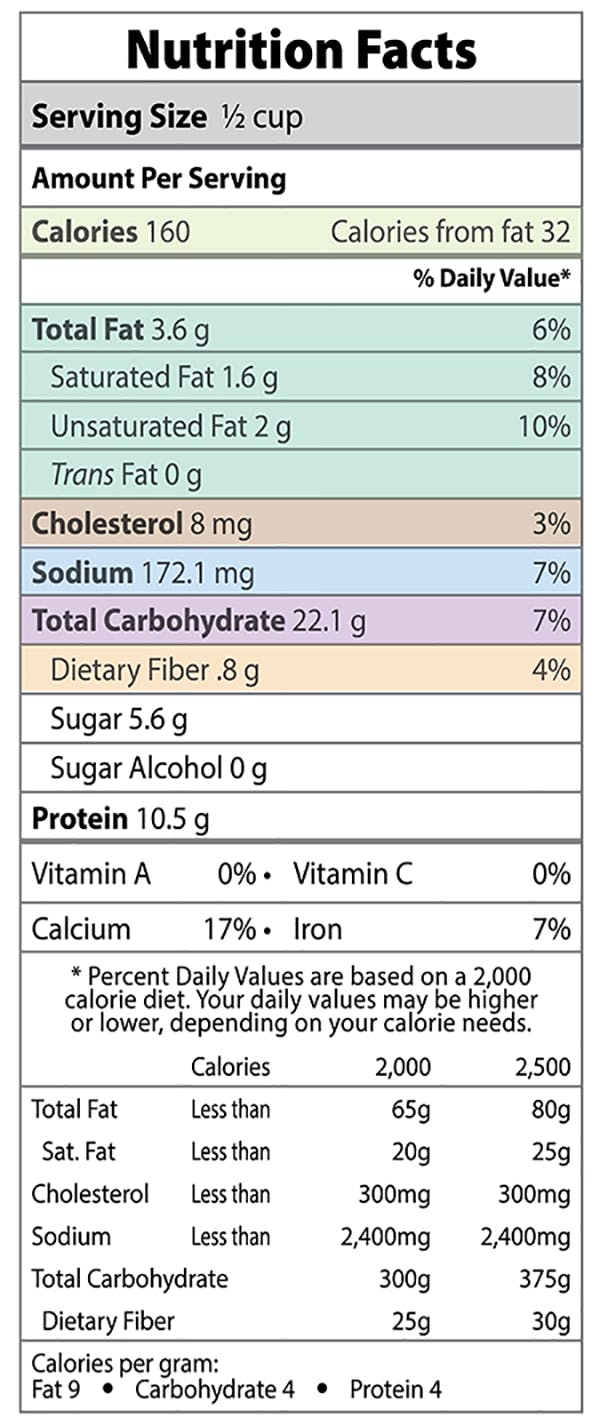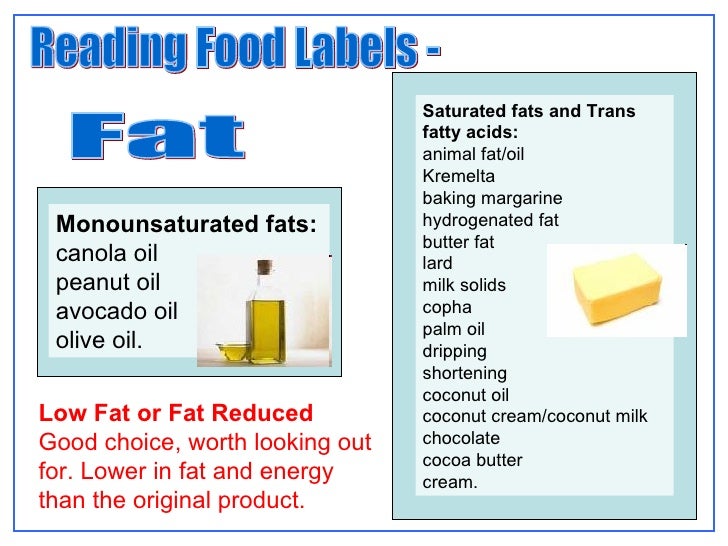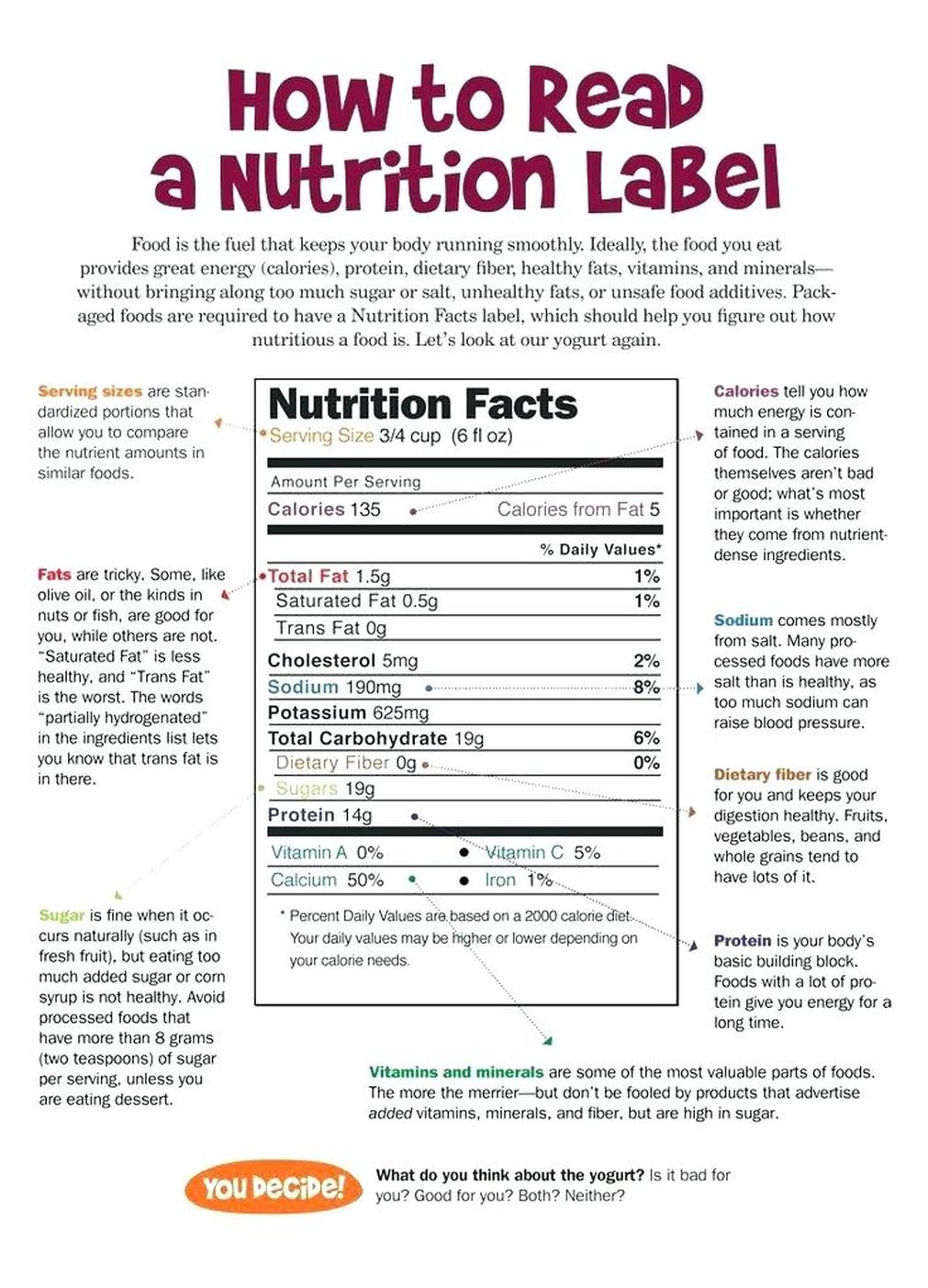45 reading sodium on food labels
How to Read a Nutrition Facts Label | Everyday Health Lower sodium limit Food labels reflect the new, slightly lower RDA of 2,300 milligrams (mg) per day (down from 2,400 mg per day). How to Read a Nutrition Facts Label First, know that, as the label... Sodium Infographics | cdc.gov The U.S. Dietary Guidelines recommend limiting sodium to less than 2,300 mg/day, and about 6 in 10 adults should further limit sodium to 1,500 mg/day*. Choose wisely to stay under 2,300 mg**. Top 6 Sources of Sodium from Restaurant Foods1,2: 1. 170 to 7,260mg sodium per sandwich. 2. 393 to 4,163mg sodium per slice of pizza containing meat. 3.
› sites › defaulthow to understand food labels - Eat For Health Sodium (Salt) Choose lower sodium options among similar foods. Food with less than 400mg per 100g are good, and less than 120mg per 100g is best. Ingredients Listed from greatest to smallest by weight. Use this to check the first three ingredients for items high in saturated fat, sodium (salt) or added sugar. Other names for ingredients high in

Reading sodium on food labels
› medialibraries › urmcmediaA Guide to Reading Food Labels - University of Rochester Feb 27, 2013 · a single serving of this food come from fat. Due to its high fat content, this food is not a healthy choice. Limit These Nutrients . Americans typically eat too much saturated fat, trans fat, cholesterol, and sodium, which can increase the risk for heart disease, cancer or diabetes. Total fat is important to watch, but saturated fat and trans ... A Guide to Reading Food Labels - University of Rochester 27.02.2013 · A Guide to Reading Food Labels Reading food labels can help you make wise food choices. Most foods list nutrition information on the package label, called Nutrition Facts. These facts can help you compare foods and choose the healthiest option. Sample Label 1 Serving Size Calories . Limit These . Nutrients . Get Enough of These Nutrients 5 Nutrition … Is Sodium the Same Thing as Salt? - Eatright.org 08.08.2019 · On the label, look for foods that are lower in sodium. Choose foods with less than 120 milligrams of sodium per serving. Look for the words salt-free, sodium-free, very low sodium and low sodium on the label. Double-check sodium content of foods with labels that read unsalted, no salt added, reduced sodium or lower sodium. These items may still ...
Reading sodium on food labels. Reading Food Labels - What You Need to Know - Drugs.com The amount of sodium you should eat and drink each day should be less than 2400 mg. Most of the sodium people get in their diet comes from salt. Total Carbohydrate: The amount of carbohydrates in one serving is listed in grams. People with diabetes (deye-ah-BEE-teez) need to control the total amount of carbohydrates they eat. The Basics of the Nutrition Facts Label 04.03.2022 · The following is a quick guide to reading the Nutrition Facts label. Step 1: Start with the Serving Size. Look here for both the serving size (the amount people typically eat at one time) and the number of servings in the package. Compare your portion size (the amount you actually eat) to the serving size listed on the panel. The Nutrition Facts applies to the serving size, so if … › food › nutritionIs Sodium the Same Thing as Salt? - Eatright.org Aug 08, 2019 · On the label, look for foods that are lower in sodium. Choose foods with less than 120 milligrams of sodium per serving. Look for the words salt-free, sodium-free, very low sodium and low sodium on the label. Double-check sodium content of foods with labels that read unsalted, no salt added, reduced sodium or lower sodium. Reading Food Labels | ADA - American Diabetes Association Reading Food Labels. Understanding Food Labels. It’s time to decode those food claims. Trying to figure out nutritional information on labels and packaging isn’t easy. The good news is that we can help. Untangle packaging claims. If you get tripped up on food content claims, you’re not alone. Fat free vs. low fat vs. reduced fat. Low cholesterol vs. reduced cholesterol. It’s …
How to Read Nutrition Facts Label - Food Network If 1 serving of a food has 120 mg of sodium, it can technically be labeled as a "low sodium" food. However, if you eat 3 servings, triple that number, and now you're consuming 360 mg of sodium,... How to Read Food Labels - Mark's Daily Apple Primal, paleo, keto, Whole30, vegetarian, vegan—they all have their own set of guidelines about what foods are "allowed" and which you should limit or avoid. Front-of-package food labels allow you to scan the shelves at your supermarket and quickly gather information about products. Depending on which diet or food plan you're following ... Controlling Sodium and Reading Labels Very low sodium: less than 35 milligrams of sodium per serving. Low sodium: less than 140 milligrams of sodium per serving. Labels list the ingredients in ...4 pages › en › healthy-livingUnderstanding Ingredients on Food Labels | American Heart ... Food labels are an important source of information about calories and the nutritional value of the foods you eat, a crucial tool in building a heart-healthy diet. The Nutrition Facts information is always displayed in the same orderly fashion and helps you understand how much of certain nutrients that you need to limit are contained in the ...
FDA Nutrition Label Update: How to Read the New Food Label | U.S. News ... You want a low DV for saturated fat, sodium and added sugars. A 20% DV or more of a nutrient is considered high. You want to choose foods with a high DV of dietary fiber, vitamin D, magnesium,... Nutrition labels: Finding out about the food you eat These claims can describe the amount of a nutrient in a food, for example: "low fat", "reduced sodium", or make statements about the effects of a certain food on a person's health. How to read a label Serving size. All information on the nutrition label is based on a specific amount of food, referred to as the serving size. Nutrition Facts: How to Read Nutrition Labels - Greatist Common nutrition terms to know. The Food and Drug Administration (FDA) regulates terms used on food labels. Here are some to look for: Calorie-free: Less than 5 calories per serving. Low calorie ... › understanding-food-labelsUnderstanding food labels - Canada.ca Find information on food labels and how to understand them. Learn about nutrition facts tables, serving size, list of ingredients, % daily value and nutrition claims.
How to Understand and Use the Nutrition Facts Label | FDA Nutrients to get less of: Saturated Fat, Sodium, and Added Sugars. Saturated fat, sodium, and added sugars are nutrients listed on the label that may be associated with adverse health effects - and...
The Secret to Reading Nutrition Labels - Meghan Telpner And if we make decisions based on that number, we might be missing out on an excellent source of nutritious fats. vitamins and minerals Most labels will include some mention of vitamins and minerals such as sodium, potassium, calcium, iron, Vitamin C, Vitamin A and more. What a label won't tell you is the quality of those vitamins and minerals.
The Basics of the Nutrition Facts Label Eating too much added sugars makes it difficult to meet nutrient needs within your calorie requirement. High levels of sodium can add up to high blood pressure. Remember to aim for low percentage DV of these. Step 6: Get Enough Vitamins, Minerals and Dietary Fiber

Understanding food nutrition labels! | ePosts Newspaper - find and browse through varies useful ...
Understanding Ingredients on Food Labels - American Heart … But when it comes to sodium, added sugars and saturated and trans fats – which in excess can damage your heart health and increase your risk of heart disease and stroke – it can be difficult to tell just how much is in there. The reason is, these ingredients can go by several names. There are many terms used for sugar on food labels.
Food Labels (for Teens) - Nemours KidsHealth A food with 5% or less of a nutrient is low in that nutrient. A food with 10%–19% of a nutrient is a good source of that nutrient. A food with 20% or more of a nutrient is high in that nutrient. The information on food labels is based on an average adult diet of 2,000 calories per day. The actual number of calories and nutrients that kids ...
kidshealth.org › en › teensFood Labels (for Teens) - Nemours KidsHealth A food with 5% or less of a nutrient is low in that nutrient. A food with 10%–19% of a nutrient is a good source of that nutrient. A food with 20% or more of a nutrient is high in that nutrient. The information on food labels is based on an average adult diet of 2,000 calories per day.
How to Understand and Use the Nutrition Facts Label | FDA 25.02.2022 · People look at food labels for a variety of reasons. But whatever the reason, many consumers would like to know how to use this information more effectively and easily. The following label-reading ...
This Is How to Read a Nutrition Facts Label on the Keto Diet This act mandated that, with a few exceptions, all packaged foods needed nutrition labels — thus creating the black-and-white labels we see on packaged foods today. The nutrients that required labeling included: Calories Calories from fat Total fat Saturated fat Cholesterol Sodium Total Carbohydrate Dietary fiber Sugars Protein Vitamin A Vitamin C
13 Misleading Food Label Claims and How Not to Be Tricked 1. Label Says "Sugar-Free". The Food and Drug Administration (FDA) provides guidelines for a variety of common food labels, including sugar-free. While the term suggests that products labeled this way would be completely free of sugar, they can actually contain up to 0.5 grams of sugar in a single serving size.
How To Read Food Labels - Fit Me Solution The Daily Value for iron is 18 milligrams, so 1 milligram of iron is enough to take notice of: it is more than 5 percent. But because the current Daily Value for calcium on food labels is 1000 milligrams (and the proposed is 1300), 1 milligram of calcium is a negligible amount.
How to Read Nutrition Labels Like a Pro - Reader's Digest Canada How to Read Nutrition Labels in Canada, Line by Line ... For a food product to be considered "sodium-free," it must contain less than five milligrams of sodium per serving. Stick to foods that have a maximum of 360 milligrams of sodium per serving. Learn to spot the signs you're eating too much salt. 7 / 10. Photo: Shutterstock.
Label reading 101 - Healthy Food Guide Label reading cheat sheet For any packaged food product you choose, the health guidelines to aim for are: Less than 10g fat per 100g Less than 15g sugar per 100g Less than 120mg sodium per 100g What about the Health Star Rating? This Australian government health initiative ranks products on a scale from half a star to five stars.
Low Sodium Diet - University of Virginia School of Medicine Reading Nutrition Labels You should get in the habit of checking food labels for the most up-to-date information. Sodium is always on the food label. These steps will help you figure out how much sodium is in a certain food: 1. Number of servings and mg of sodium – The label gives you the serving size and the number of servings in the package ...
How To Read Food and Beverage Labels | National Institute on Aging Most older adults exceed the recommended limits for saturated fats, sodium, and added sugars. Compare and choose foods to get less than 100% DV of these each day, making sure to adjust for how many calories are in your diet. Additionally, many older adults do not get the recommended amounts of dietary fiber, vitamin D, calcium, and potassium.
Read the Nutrition Facts Label for Sodium!
› reading-food-labelsReading Food Labels | ADA - American Diabetes Association It’s time to decode those food claims. Trying to figure out nutritional information on labels and packaging isn’t easy. The good news is that we can help. Untangle packaging claims. If you get tripped up on food content claims, you’re not alone. Fat free vs. low fat vs. reduced fat. Low ...
3 Ways to Improve Your Food Label Literacy | Blogs | CDC Knowing how to read food labels is a practical skill that can help you avoid food allergens, reduce sodium and sugar in your diet, reduce food waste, and better manage your emergency food supply. Here are three ways you can improve your food label literacy. Learn to Identify Allergens. Food allergies affect millions of Americans and their families.
Understanding food labels - Canada.ca Food labels, nutrition facts tables, serving size, ingredients, % daily value, nutrition claims. Services and information. Nutrition facts tables . How to use, what is in them, foods that don't have a nutrition facts table. Serving size. How to use the serving size on nutrition facts tables. List of ingredients. About list of ingredients on packaged foods, common terms used for some ...














Post a Comment for "45 reading sodium on food labels"